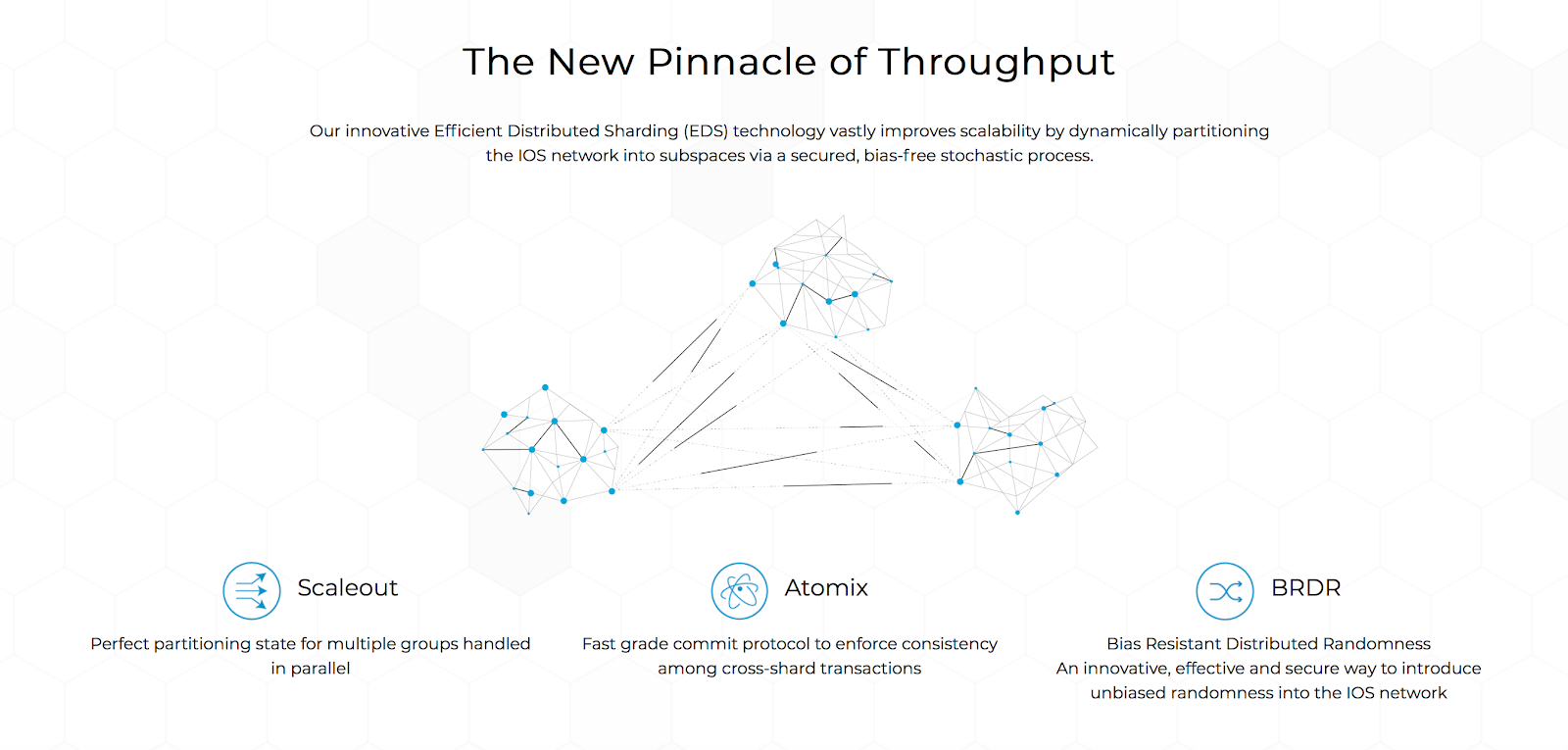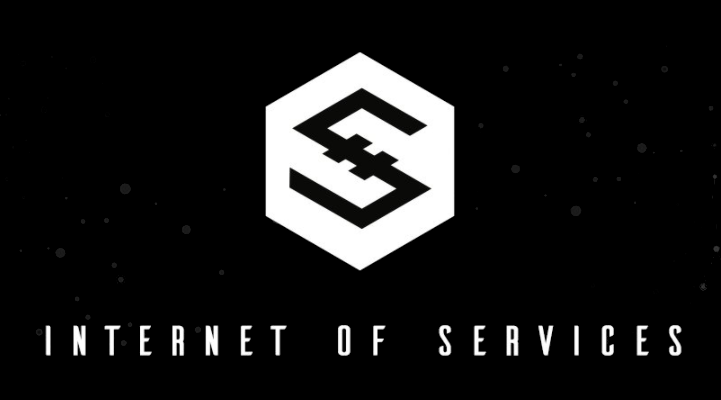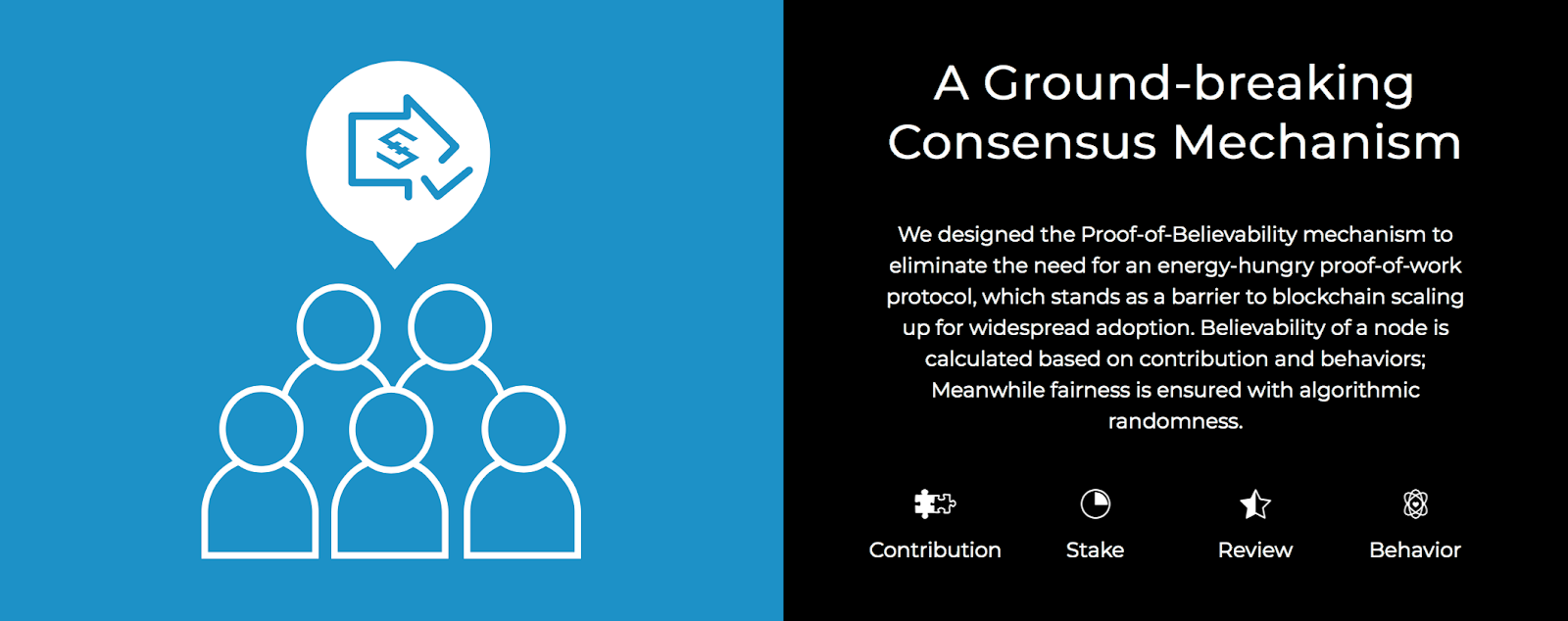This time I had the pleasure of interviewing the IOST team. A Secure & Scalable Blockchain for Smart Services aiming to offer a full suite of solutions.
How would you describe the main pillars of the project?
Blockchain, in our eyes, represents a leveling of the digital playing field. The core pillars of the Internet of Services architecture are thus based on the innovations in distributed systems and trustless networks which are paving the way for a decentralized future. IOST is building a scalable infrastructure capable of handling the throughput necessary for the mass adoption of blockchain technology. Our team has already been able to achieve 8,000 tps on our private testnet, and we continue to research and test new approaches for improving our core technology which include:
- PoB or Proof of Believability, a hybrid of the classic Proof-of-Stake model where instead of delegating validation to a set group of trusted servers or masternodes, the PoB system constantly selects new random groups of validators based on their reputation as good actors within the ecosystem. A subtoken called “servi” is distributed to these good actors and increases their chances of winning block rewards. However, once they win block rewards, the servi automatically clear. This minimizes the tendency towards centralization, whereas the largest bagholders would otherwise build up an insurmountable advantage that disincentivizes smaller contributors;
- EDS or Efficient Distributed Sharding, is our approach to sharding. When a node is overworked, the EDS system selects another node to allocate some of the incoming workload, which allows for a linear scaling of the network’s capability as new nodes enter the ecosystem;
- HUDS or Hyper Universe Distributed System, provides a reliable distributed storage and subscription mechanism on P2P networks where both users and service providers can store files or metadata on multiple nodes in the network, without downtime or censorship;
- Scaleout, an optimized partitioning state for multiple groups handled in parallel;
- Atomix, a fast grade commit protocol to enforce consistency among cross-shard transactions;
- BRDR or Bias Resistant Distributed Randomness, serves as an innovative, effective and secure way to introduce unbiased randomness into the IOST blockchain

Most of the public is unaware that IOST is actually the second venture our founding team has built together. We previously worked to innovate the IoT industry, where we saw good traction and success but also experienced the shortcomings of traditional systems firsthand. It was at this first IoT business, Dora, that we saw the opportunities in implementing WePay as a payment interface of choice and, as we sought to expand internationally, recognized the lack of comparable frictionless payments in most of the world. Outside of China, credit cards continue to charge heavy fees per transaction, which creates a huge barrier for businesses — like ours — based on micropayments. As we looked for solutions, we stumbled across the parallel growth of cryptocurrencies and decentralized networks.
It was an imperfect but fitting solution to a problem we had experienced firsthand.
We see blockchain as the great equalizer, a technological leveling of the playing field. We’ve built our company around this simple idea that the core technology behind distributed ledgers has the potential to reshape the world. It just needs a scalable infrastructure to help fulfill the underlying potential. These words may come across as idealistic. That’s fine. So were the first ruminations of a world wide web. Barely twenty years later, the internet is ubiquitous to how we live. Similarly, blockchain as an industry is still in its infancy, but we have the right combination of talent and drive to help it mature.
About the team and supporters, what are your strengths, at IOST?
We assembled our developer team with an eye towards expertise in distributed systems and believe that the team we have built is one of the strongest in the industry. We have veterans from top companies like Google, LinkedIn and Goldman Sachs. Several of our team members are former gold medalists in the Chinese Informatics Olympiad. Other team members hold advanced degrees from top universities such as Harvard, Princeton, Cornell, Tsinghua, and Peking.
We also have incredible institutional backing from a network of best in class investors hailing from both traditional technology and frontier blockchain funds, including Sequoia China, Matrix China, ZhenFund, INBlockchain, FBG Capital, and more. Our institutional partners are a distinct competitive advantage for us as they open doors and foster partnerships.
Lastly, a key part of our mission is create a pipeline for talent so that in the future, programming on the blockchain does not represent a significant barrier to entry. To help address this problem, we’ve partnered with founders from coding academies such as Codecademy, Skillshare, and General Assembly to extend blockchain development to the masses. We believe creating these learning platforms will greatly accelerate the growth of our developer community and allow IOST to become the default platform of choice for programmers of all experience levels.
Thinking about the future, do you have any roadmap with relevant upgrades or partnerships?
We are working to release our testnet to the public by early Q3. It’s an exciting time all around as we are quickly nearing the release of an MVP that will allow us to scope, pilot, and scale partnerships with enterprises. We are also sponsoring an internal dApp development team and are looking forward to showing the community what they’ve been working on. This year will bring a bevy of exciting developments and we can’t wait to share more of what’s in our pipeline as we get closer to launching our testnet. It is an enormous privilege to build on the work of early pioneers such as Bitcoin and Ethereum. We recognize that we only have this chance to construct an enduring platform — one capable of supporting a simultaneously functional and decentralized suite of applications — thanks to their contributions. We stand on the shoulders of giants.
What’s the added value of IOST in comparison with other competitors?
- High throughput without compromising security or decentralization thanks to PoB.
- A professional team with a track record of excellence and a bias towards execution.
- Unparalleled institutional backing that helps open doors across the enterprise.
- An educational pipeline training the next generation of developers for our platform.

What are the use cases you are looking to cover with IOST?
The Internet of Services is a next-generation blockchain technology that provides the network infrastructure to support a microservice driven ecosystem. Our platform not only provides its users a completely decentralized way to exchange online goods and services, it also enables developers to deploy large scale dApps with the ability to support a massive number of users. With a series of groundbreaking innovations, such as Efficient Distributed Sharding (EDS) and believability-driven consensus, we are able to increase the system’s throughput enormously while guaranteeing security. To get a little more specific, the IOST blockchain has built in a programmable smart contract language, private transactions, decentralized P2P hosting, decentralized marketplaces, and the capacity to support a variety of new use cases.

How are you aiming to provide scalability to your service?
We developed EDS based on the sharding technique widely adopted in distributed systems and databases to enable parallel transaction processing. Inspired by the classic “Divide and Conquer” principle in computer science, sharding is a technique that partitions the entire IOS network into a certain numbers of subspaces, or shards. Each shard acts as a miniature network which can run its own consensus protocol in parallel. Instead of having the entire network validating the same set of transactions, subsets of transactions can be handled by various consensus groups simultaneously. Therefore, the throughput of the system can be significantly enhanced even as the size of the network and the number of transactions grow rapidly. Moreover, in order to ensure the network is divided homogeneously, we have developed a Bias-Resistant Distributed Randomness protocol in order to introduce unbiased and transparent randomness into the sharding process.
Traditional blockchain systems have an inherent trade-off between safety and throughput, depending on shard size. A system with a large number of small shards delivers better performance but provides less resiliency against bad actors, and vice versa. In order to break the trade-off in a way that maintains safety and increases throughput, we propose an innovative Proof-of-Believability (PoB) consensus protocol for the Internet of Services. PoB is a randomized Proof-of-Stake consensus protocol which uses a faster graded Byzantine Fault Tolerance mechanism, that allows for a set of nodes to decide on the next block. A key aspect of Proof-of-Believability is that these nodes are selected using algorithmic randomness based on input from previously generated blocks. In traditional PoS or DPoS systems, dominant nodes develop as “the rich get richer.” However in PoB, accounts with higher servi (a self-destructing and non-tradeable reputation token), more IOS tokens, and better reviews are more likely to be selected as the next validators and beneficiaries of the newly generated blocks.
As an aside, many projects are using slight variations on PoS, which is fundamentally flawed. Generally the people who start with the majority of stake will simply get more of the coin, which leads to an overall problem in which the rich get richer and dominant nodes are established, defeating the point of decentralization. PoB is a solution to this problem as it introduces several different factors which take into account an actor’s history of actions when determining who gets rewards for staking. There is a sub-token called “servi” which are non-tradeable. These can be earned without staking a significant amount, and by simply being a good actor and a validator in the ecosystem. Servi also weight heavily into who wins staking rewards, which means that there are incentives for smaller actors to add to the network. What makes servi so interesting is that they are self-destructing. What that means is that whenever a node wins staking rewards and gets to write the next block, their servi are automatically destroyed. This incentivizes actors to continue being good actors in the system and doesn’t allow them to rest on their laurels, i.e. having a large amount of the coin.

Evaluation of the current scenario for IOST and the blockchain industry.
In regards to the recent popularity and interest in blockchain, it’s a bit of a mixed blessing. On one hand, the spotlight has drawn talent, money and institutional backing into the blockchain industry. The last year has been beneficial for the long term growth of blockchain technology in so many ways. However, the spike in interest combined with murky regulatory guidelines has brought a significant amount of vaporware into the space, whether it be from overmatched idealists who don’t have the technical know-how to follow through on their visions, or from outright frauds. Despite this mixed bag, our team is extremely bullish about the long term viability and versatility of blockchain technology. We believe the first “killer app” will be released in the next two years, and are hard at work creating an infrastructure capable of supporting it.
At the same time, we are certainly more so David to the Goliath that is Ethereum and Consensys today. There are really only two ways to envision how the future might unfold at the platform layer: 1) Ethereum manages to fix their core issues and consolidate resources, from funding to developers to integrations, or 2) a second or third generation blockchain, unburdened by the legacy debt of earlier protocols, will be able to deliver on the technology and overcome the early incumbent. It’s a race against time and our team is sprinting, whereas others seem to be pacing. Many incumbents and new entrants alike are still tied down by legacy technologies and struggling to adapt. Some teams simply don’t have the technical bench to make a serious run at the scalability problem. And that’s not to knock their achievements; it’s not an easy problem.
In the end, we really don’t see competition. Most of the legitimate teams, our peers, are working in pursuit of the same goal and we just happen to believe in ourselves the most. Those who know us best — our investors and community — seem to agree: we have the right competencies and approach to solve the bottleneck keeping blockchain at bay.

